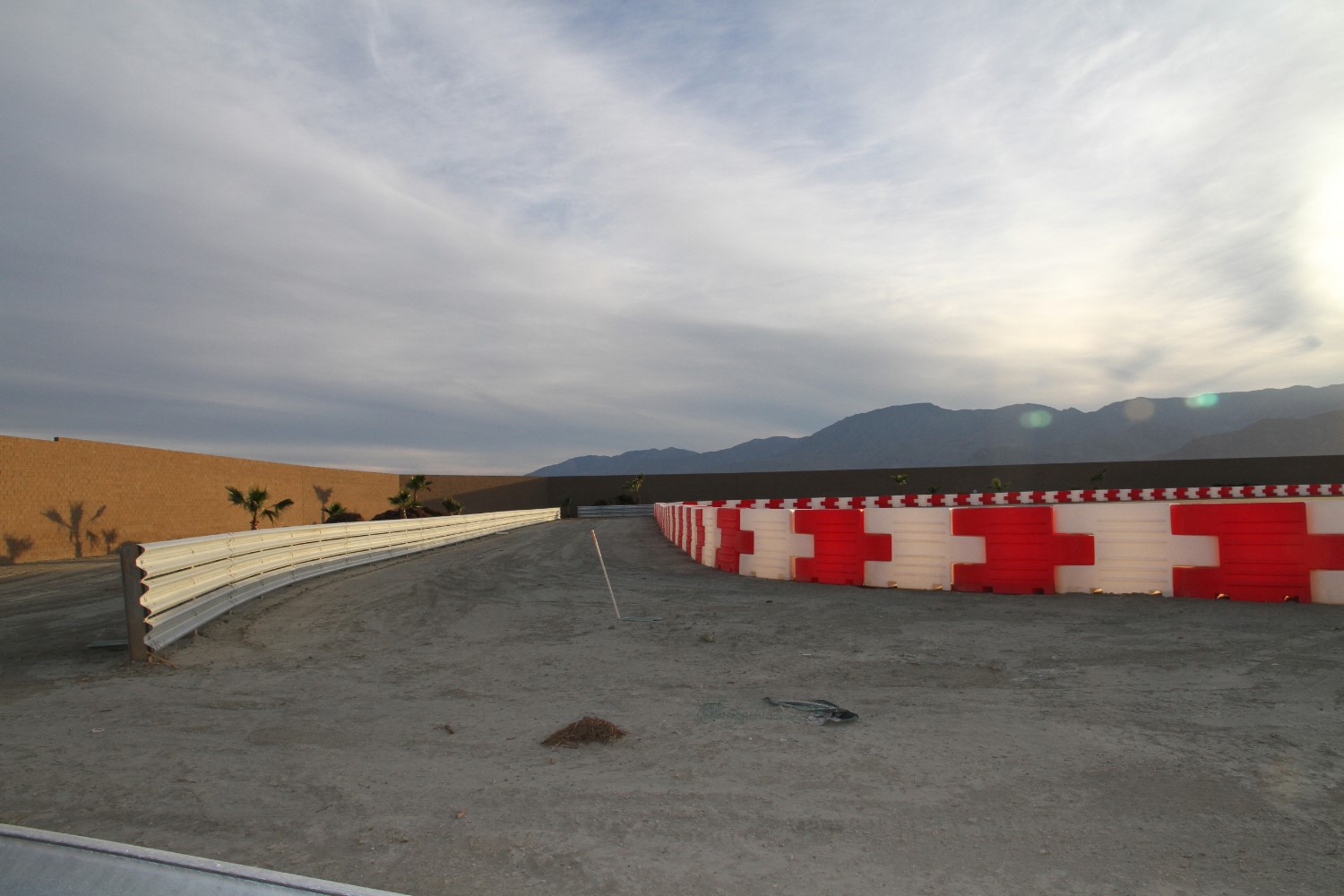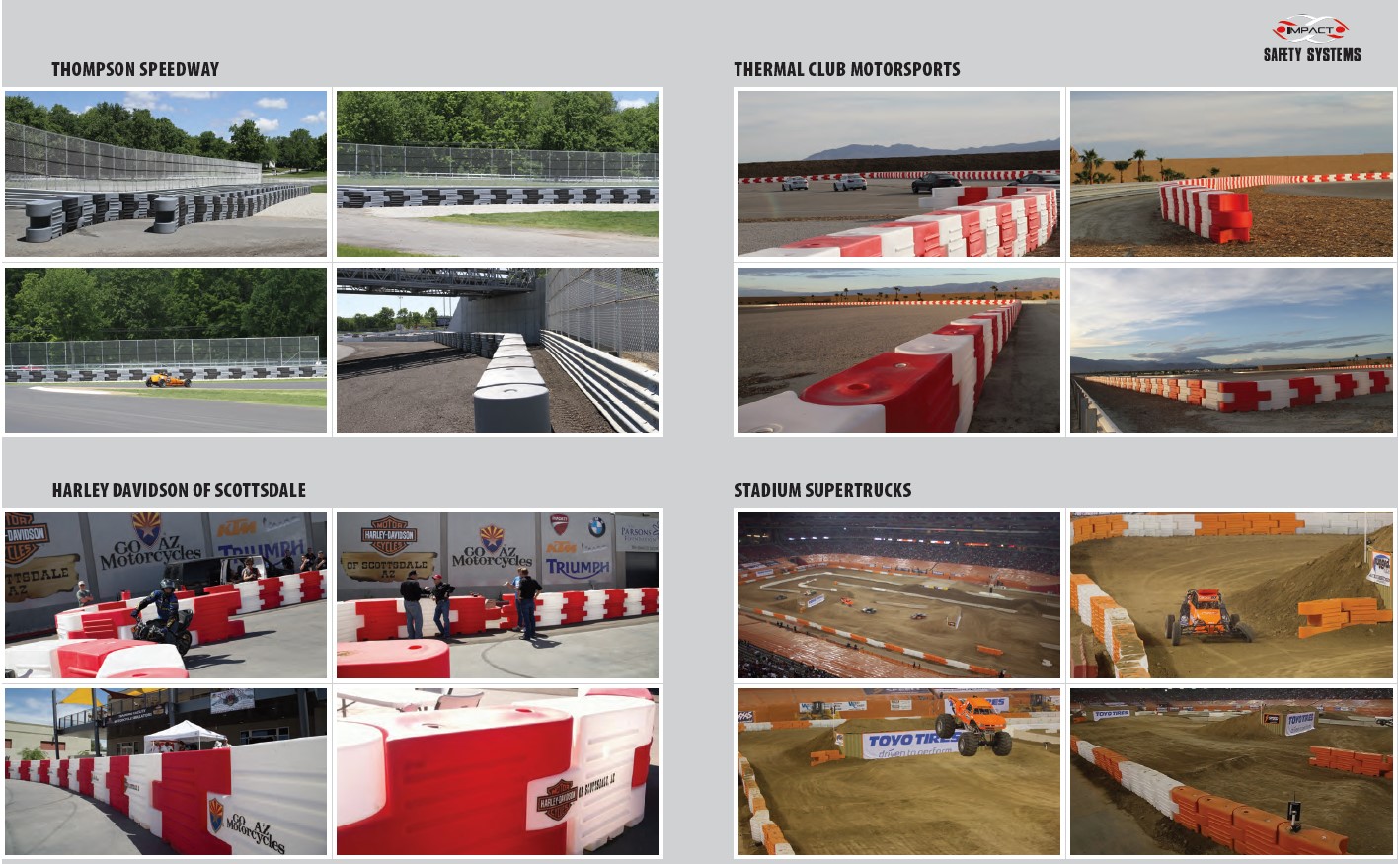A Pro-Racer Driven To Make Tracks Safer
 |
| Armco Barrier (L) vs. ISS Barrier (R) |
In my 40 years as a pro-racer, there have been memorable highlights and multiple finishes, but there have also been serious injuries. Same can be said for many other drivers but, in some cases, they lost their racing career and in others, their life. In November 1987 I watched Fitzgerald, Paul Newman's driver, slap-side into a concrete wall during the St. Petersburg Trans Am Race where he was killed on impact.
Then, while racing at mid-Ohio, I was hooked into Armco in turn 2 going 90 MPH and almost lost my right foot. Since then, I've witnessed or been involved in dozens of altercations with cement, Armco and even tire walls at tracks across the country.
All professional drivers know the risks, but none of us enter a race with the intention of getting hurt. Our job is to compete, not to crash. Yet, improvements on the contact points, which cause the majority of damage, have not kept pace with the evolution of the motorsports industry.
Over time, horsepower has ramped up as much as 40%, yet track walls have stayed basically the same. Helmets, Hans and car technology have advanced, while most track barriers remain antiquated. When metal hits concrete it crushes; steel guardrails can impale and tires cause ricochets.
IndyCar's invention of the Safer Barriers have certainly helped, but aren't an option for many tracks. You can't stop racers from driving fast or from crashing, but there has to be a way to mitigate the consequences. I once asked myself "Why don't they allow for crush space to slow drivers down before their bodies and chassis get shocked by a hard wall?" I could no longer stand by and do nothing, so I chose to take matters into my own hands and make a difference for driver safety.
[adinserter name="GOOGLE AD"]Years of research went in to the development of a new kind of barrier system that creates a softer landing and a cushion before "terminal impact" occurs. The outcome was Impact Safety Systems (ISS) and ProLink Barriers–A thicker, wider, stronger composite polyethylene, not polypropylene, barrier that can be filled with water to ballast and linked together with PVC pins for cumulative pull. The barriers are designed to be malleable and yield in order to absorb energy and progressively retard speed before vehicles reach an immovable wall. They've been tested time and again at my own tracks, as well as at our customers', and they work. Tracks have testified to seeing high-speed hits that resulted in very little damage to the car and, more importantly, the driver walked away unharmed.
Yet I find myself fighting an uphill battle with tracks that simply won't consider changing from the status quo. I don't advocate removing or eliminating existing concrete, Armco, etc, I simply ask that they create a buffer or first line of defense to mitigate impact and slow the racecar down. A 4500-pound permanent cement wall should be the last line of defense, while a 75-pound (when empty) movable ISS Barrier should be the first, or even the second and third point of contact, depending on how high the impact zone ranks.
Tracks don't need to cover the entire road course or oval with new barriers. Driver protection would increase dramatically if they would merely buffer the key areas with one to three rows of ISS Barriers where the most and worst accidents typically happen. My whole motivation in developing a safer surface buffer is to prevent cars from colliding full speed into a rigid barricade.
 |
| ISS Barrier's in action |
I have always contended that it's impossible to understand how critical track safety is, unless you've personally been behind the wheel, racing at 100+ miles per hour, knowing you could hit a wall that might maim or kill you. The bottom line is track operators aren't the ones risking their lives in the driver's seat.
I've presented prospective tracks with a very convincing case to support both enhanced safety and a smarter investment, including a comprehensive materials, installation and labor comparison that proves they'll save between 50% and 80% with portable ISS barriers versus repairing or replacing concrete, Armco or tires, in addition to making money from advertising or sponsorships. Regardless, complacency remains my biggest competition.
But I refuse to give up the good fight. The only people that will get hurt if nothing changes are the drivers. Why is it that, though historically there have been more deaths in pro racing than in the NFL, football players have been able to evoke safety improvements in many areas, yet pro drivers haven't? Thus, now my goal is to rally as many of my racing brothers as possible to form a powerful legion with a louder voice that demands track safety improvements. I don't mind assuming the role of instigator, maybe even taking some heat for it, as long as changes are made and lives are saved. Meanwhile, we'll keep driving, putting on a show and delivering fans as long as we're physically able to do so. But if we're injured or, God forbid, dead, the race is over.
It's been a long road, but we're beginning to see changes. Major tracks and organizations worldwide have adopted this new approach, such as Thompson Motor Speedway, Luddenham Raceway, The Thermal Club, Inde Motorsports Ranch, MB2 Raceway and the SVRA, just to name a few.
[adinserter name="GOOGLE AD"]ISS recently developed an even safer barrier system specifically for maximum speed areas that offers three levels of foam filling options–soft, medium and firm, similar to how pillows are made. While they are still in the final testing phase, I see these barriers as another significant step toward improved driver protection.
I've been lucky enough to survive a long career in racing for which I'm very grateful, but others haven't been as fortunate. Every day that goes by without change means another potential racing tragedy that could have easily been avoided. The stakes are high, but the awareness isn't. I feel it's my obligation to do whatever it takes to further track safety for drivers now and in the future.
